10 Places to Visit in Cusco
The city of Cusco is known as the “navel of the world” since the time of the Incas; Touring this city will give you the feeling of walking through a huge museum, in which the Inca and Spanish cultures merged in architecture, culture and customs. If you already have your tickets Machu Picchu , do not miss the opportunity to enjoy the Imperial City of Cusco.
Sacsayhuamán
Main Square
The Cathedral of Cusco
Church of the Company of Jesus
The Qoricancha Temple
Market of San Pedro
Church of San Cristobal
The Christ white
The stone of the 12 angles
The neighborhood of San Blasacsayhuamán
Sacsayhuamán
Sacsayhuaman is located at 3,555 masl; Its name comes from the Aymara “saqsaw waman”, which means “place where the hawk is satisfied” and is without doubt the most mysterious place in Latin America. When the conquerors arrived in Cusco in 1533, they were astounded by this megalithic monument of Cyclopean walls; Composed of rocks up to 200 tons, that fit perfectly with each other. Even today, it is a mystery how a place like this could be built and even more, what was its function.
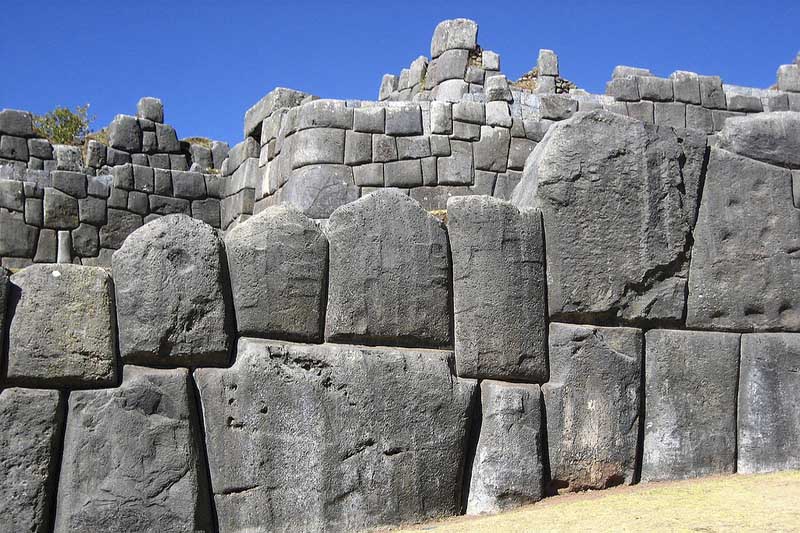
Fortress of Sacsayhuamán
Main Square
The Main Square of the Cusco is a space located in the center of the city, has stone paths and well-kept gardens; It houses 2 of the most emblematic buildings of the city, the Cathedral of Cusco and the Church of the Company of Jesus. Spanish colonial buildings dominate the architecture of the square, these are built on the walls of ancient palaces and Inca residences. Here are held many of the most important celebrations in Cusco, including the Inti Raymi (Feast of the Sun) and the religious festival of Corpus Christi. The square is always full of activity, has a wide variety of restaurants and cafes that offer traditional Peruvian food, such as guinea pig or lomo saltado, and international food. Unlike many cities around the world, Cusco is packed every night of the week; If you are looking for nightlife in Cusco, just head to the square.
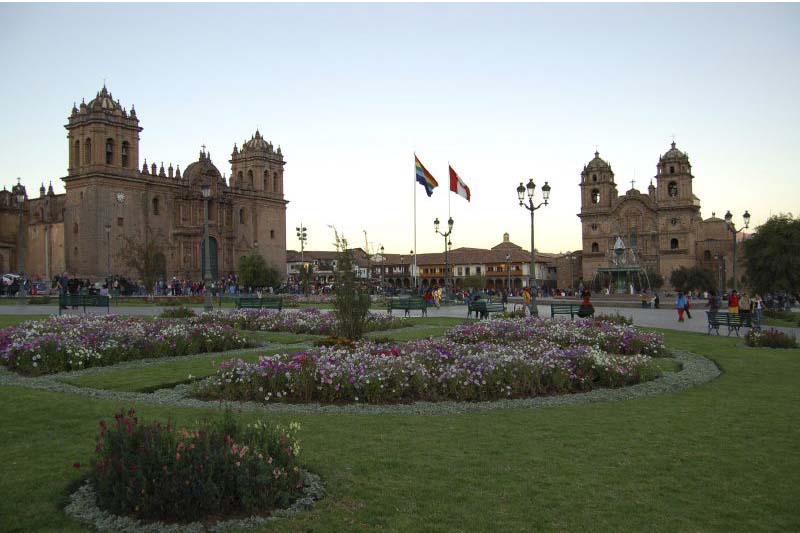
Main square of Cusco
The Cathedral of Cusco
It is the first Cathedral of Cusco, was built in 1539 in the “Suntur Wasi”, and was known as the Church of Victory. Later between the years 1560 and 1664, a new cathedral was built on the site of “Kiswar Kancha”, former palace of the Inca Wiracocha. The Cathedral has the shape of a Latin cross, the façade is Renaissance style and contrasts with the Baroque and Plateresque, is also famous for its splendid interior, with excellent examples of wood carving and colonial goldsmith, as well as a valuable collection of paintings Of the Cusqueña School.
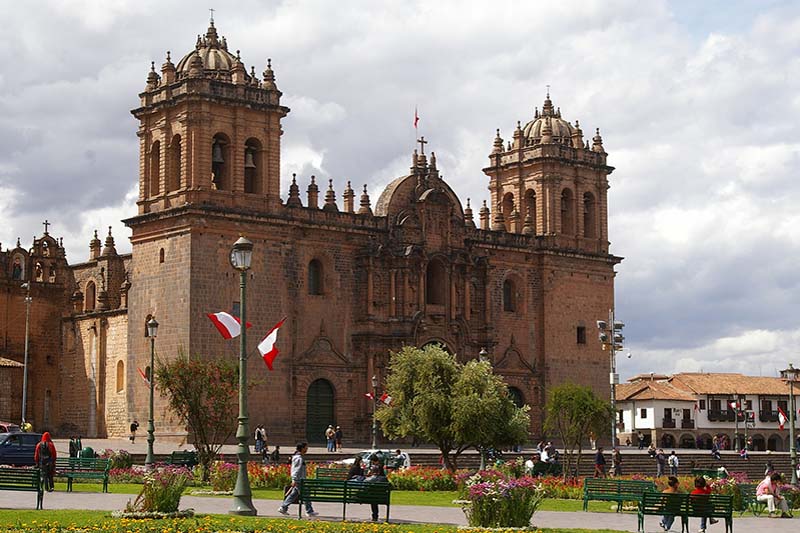
Imposing Cathedral of Cusco
Church of the Company of Jesus
The construction of this beautiful church began in 1,576 in Amaru-cancha, the palace of the Inca Huayna Capac, and is considered the best example of baroque-colonial architecture throughout America. The whole facade is made of carved stones, it is spectacular. Inside you can see a beautiful golden altar built over an underground chapel. The church also has a collection of sculptures and paintings, such as the wedding of the cousin of San Ignacio de Loyola and a Ñusta Inca.
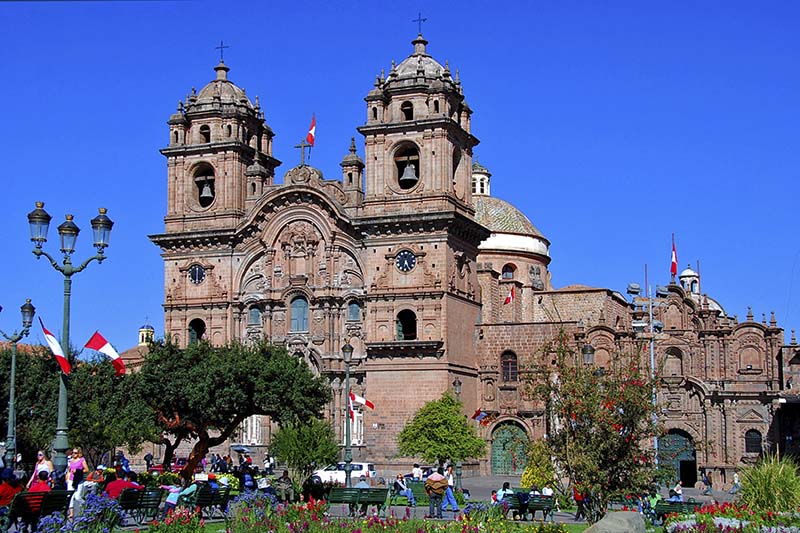
The beautiful Church of the Company
The Qoricancha Temple
The translation of the Quechua words into Spanish represents a difficulty for linguists; Is in particular, because the name of this structure has up to four forms of writing: Koricancha, Korikancha, Qoricancha and Coricancha. This word in Spanish means “Solar de Oro” The convent of Santo Domingo is the oldest religious building in Latin America, was built in 1,540 on the walls of the famous Qoricancha . After the Spanish invasion, the conquistadors divided the riches and the plots of the whole city as booty of conquest. The Qoricancha was taken by the brother of Francisco Pizarro, Juan Pizarro, who later would donate it to Fray Juan de Olias; Dominican religious of the Dominica Province of Santa Cruz, Mexico, who together with 12 friars would build the impressive convent of Santo Domingo.
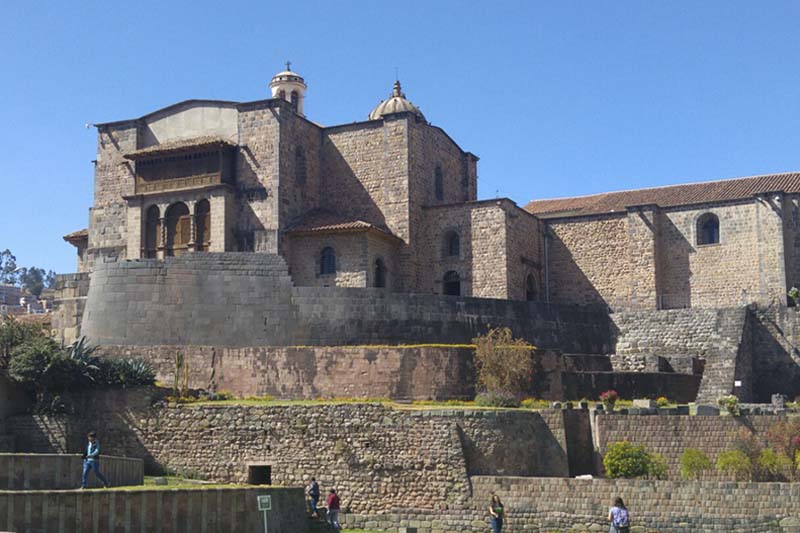
The Qoricancha
San Pedro Market
The San Pedro Market is a must see, all the elements are exhibited in a fascinating way and in the open. You will find lamb heads for broth (soup), live frogs (to improve sexual performance), cubes with fruit juice or other beverages such as quinoa chicha; Roasted suckling pig, fried and baked guinea pigs, tamales, etc. In the surroundings you will find places of typical clothes, crafts and other products at random. This place can entertain you for hours. Eating in the market will allow you to enjoy the flavors of Cusco and the local people, allowing you to experience the daily life of the city.
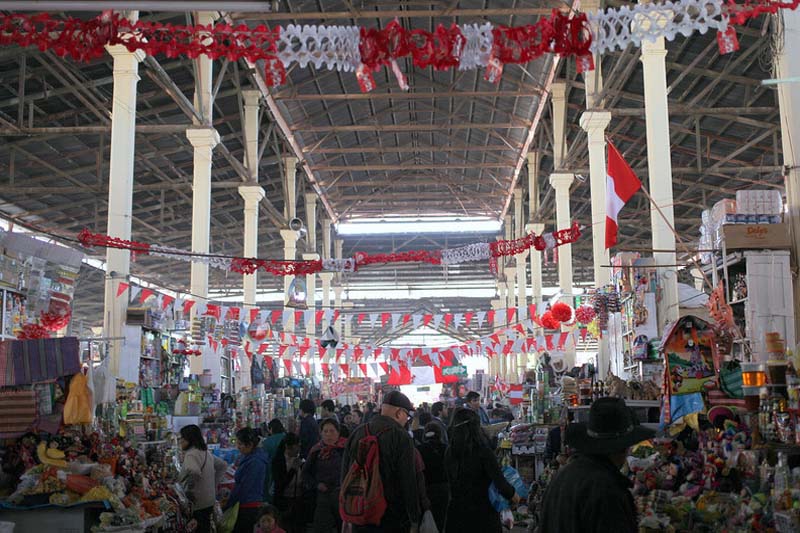
San Pedro Market
Church of San Cristóbal
There are several ways to get to San Cristobal church in San Blas, you will walk up and down between very beautiful cobbled streets (take your camera). One of the most interesting ways to get there is through Square Nazarenas. Even if churches and religious art are not to your liking, the Church of San Cristobal deserves some of its time. The large square next to the church offers magnificent panoramic views of Cusco. A clear day will allow you to see the snowy Ausangate, the highest mountain in the region. Inside the church you will find religious Cusco art, as well as some brilliant examples of how the Catholic settlers tried to extirpate the mystical belief of the indigenous population.
Una de las capillas laterales tiene una estatua de Cristo con laceraciones gráficas, pero lo más extraño es que también tiene el cuello y los brazos articulados. Las bisagras en los hombros permiten plegar los brazos, reduciendo la imagen para ser llevada un ataúd de cristal en días de fiesta. Sin embargo, el cuello articulado parece tener motivos siniestros, ya que aparentemente alguien se escondería detrás del crucifijo y en momentos apropiados, movería la cabeza de Cristo, “demostrando” la santidad de la estatua a conversos asombrados; Esto debe haber sido muy convincente. En el altar mayor se esculpe una virgen que representa a la Pachamama (madre tierra), con pechos desnudos completamente, evidenciando la coexistencia incongruente entre el catolicismo colonial y la religión indígena.
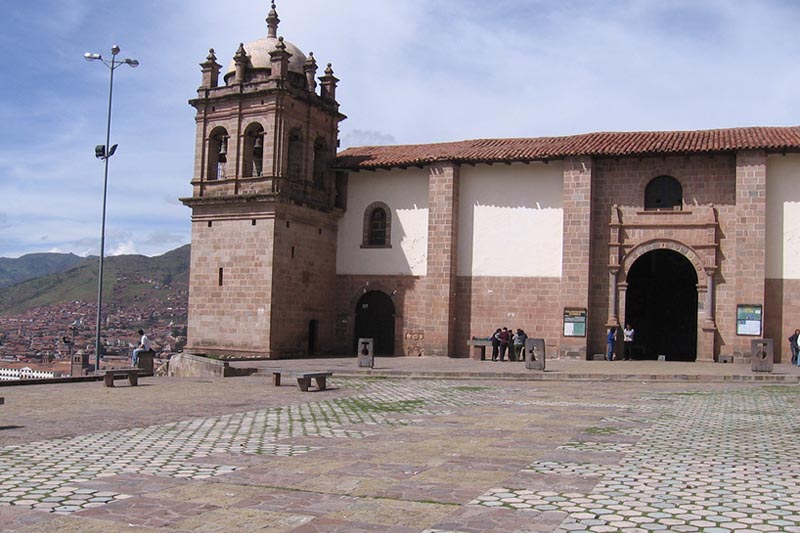
Church of San Cristobal
The White Christ
The statue of Cristo Blanco in Cusco has a height of 8 m, is located in the Pukamoqo hill (red hill) 6 km from Cusco; The open arms of the statue represent the protection of the people of Cusco. The work belongs to the local sculptor Francisco Olazo Allende, who also made the Santa Clara arch. The figure was made in a rustic way, and was worked by local people; Was built in 1945 and was a donation from the Palestinian Arab colony to Cusco.
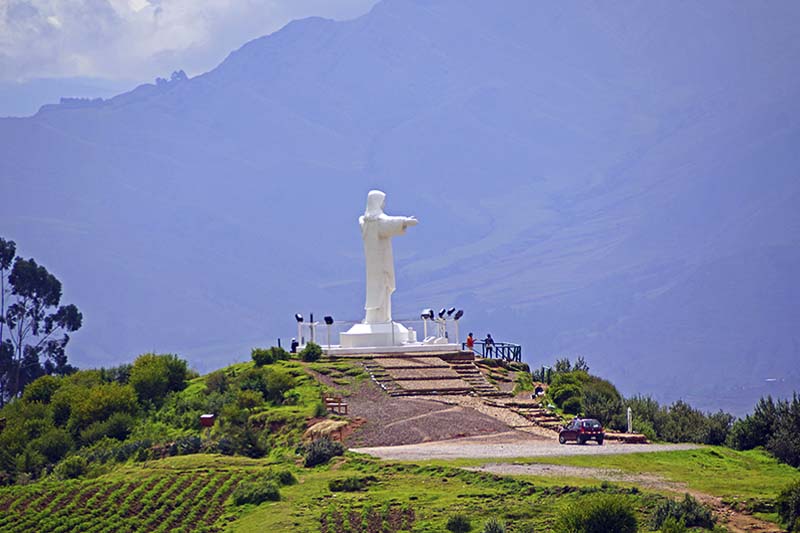
White christ, protector of Cusco
The stone of the 12 angles
The stone of the 12 angles is a stone that forms part of an old Inca wall, this carved in such a way that it has 12 angles perfectly fitted with the stones around it, is located in the street Hatun Rumiyoq (of the major rock) and Forms part of the bases of the palace of Inca Roca and where at the moment the Archbishop’s Palace is located. This stone, besides representing a very special historical element, is a sample of the high level of engineering reached by the Incas.
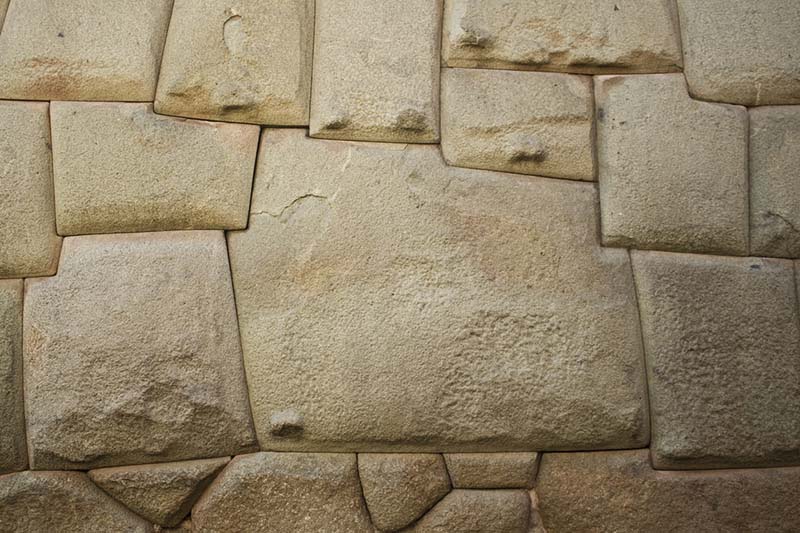
The spectacular Stone of the 12 Angles
The San Blas neighborhood
The neighborhood of San Blas, also known as the neighborhood of artisans, is located a few blocks from the Main Square of the Cusco. In it you can find workshops and shops of artists, painters and craftsmen. Known as the “artists’ district”, it has narrow, twisting streets. At the time of the Incas their name was “T’oqo-kachi” (T’oqo-hondonada; kachi-sal) and was inhabited by the Inca nobility. Its buildings and the particularity of its streets, make of it a space of world-wide attraction; Is reached following the hill San Blas down the street Hatun Rumiyoc.
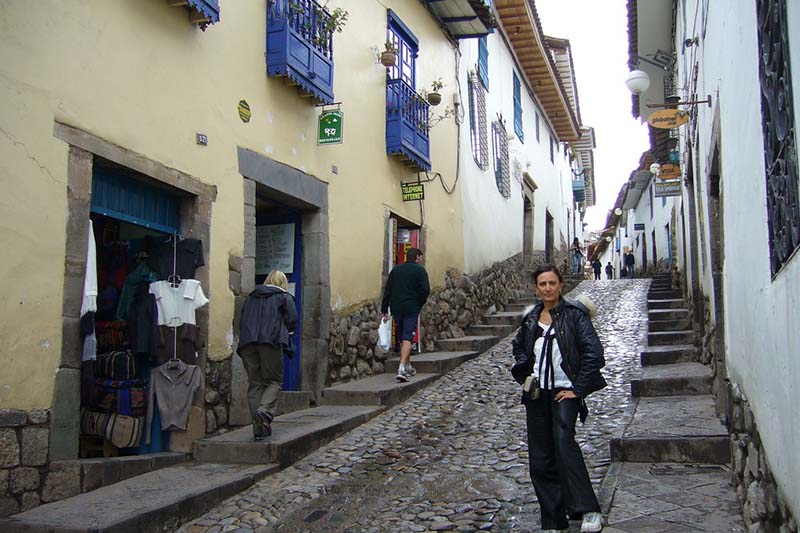
The traditional neighborhood of San Blas
By Ticket Machu Picchu – Last Update, 08-21-2017